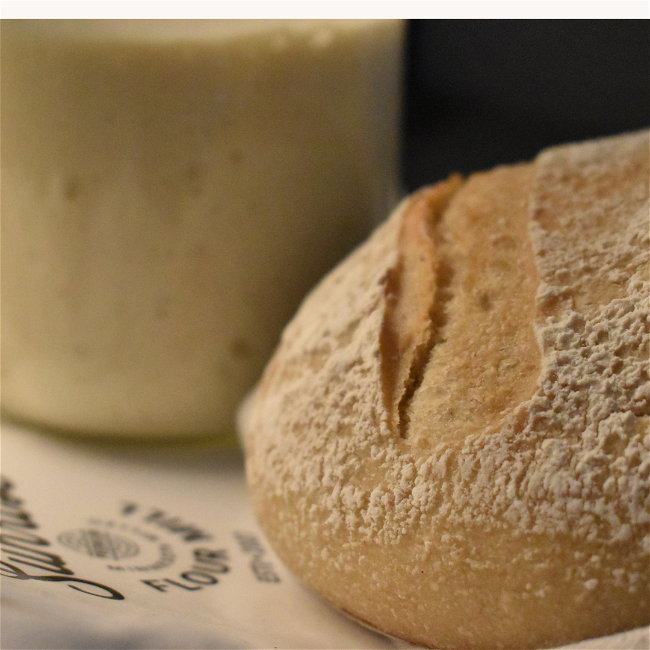Creating & Maintaining Heritage Sourdough Starter Recipe
Category
Sourdough
Cuisine
American

Ingredients
-
1/2 Cup Sunrise Flour Mill Heritage Flour
-
1/2 Cup Tepid Water (Water should be no hotter than 100F. Use well water or bottled spring water. If you use filtered or boiled city water, it’s best to let it sit out for 24 hours before using to evaporate any remaining chlorine.)
Directions
The mixture should be the consistency of a thick pancake batter. Mix by hand and leave on the counter with a loose cover over it. A warmer place in the house where the temperature is 70-75 F is best.
Each of the next 5-6 days – take out half the mixture and throw it away, adding equal amounts of flour and water (1/2 C or less) maintaining the batter-like consistency.
Somewhere around day 6-8 bubbles should start to appear and there should be a yeasty smell. Now it’s time to build up the amount of starter for use in bread recipes. If it looks like the starter is actively working, don’t throw any away, just add ½ C each water and flour as before and mix well by hand.
The next day – add ¾ C each flour and water.
The next day – 1 C each
Now there should be enough starter to take out 20-30 gr to start a levain (see our recipe for sourdough bread).Estimate how much starter is left and add enough flour and water to double it in size. There is not a critical measurement at this point. Maintain the starter’s quantity in the future based on how often bread is baked. Build up the volume when baking is planned. Halve and maintain it if baking will not occur for a while.
If baking every day or two, leave on the counter and feed it every day. For once a week baking, feed it and put in the refrigerator. Take it out the day before the levain is made. The next day, make the levain and feed it again before putting it back in the refrigerator. It should be good until the next week.
Recipe Note
This recipe works best with Heritage flours. It may not work the same with conventional wheat.
Using starter – To obtain a more sour taste will require longer fermentation. The more time and temperature the more sour the bread will be. Longer and cooler sometimes is the best. Leaving a preferment in the refrigerator for one to several days seems to develop the best taste. Experiment to determine preferred taste.
Going away for a week or two – take a tablespoon-sized portion of the starter and add flour until it is a stiff dough ball. Place the dough ball in a small jar and cover with flour. Put in the refrigerator. Upon return, take out the ball and add water and flour as before. This time it should grow into a usable starter in a few days.
Remember, starter is a living thing so it needs to eat!



















